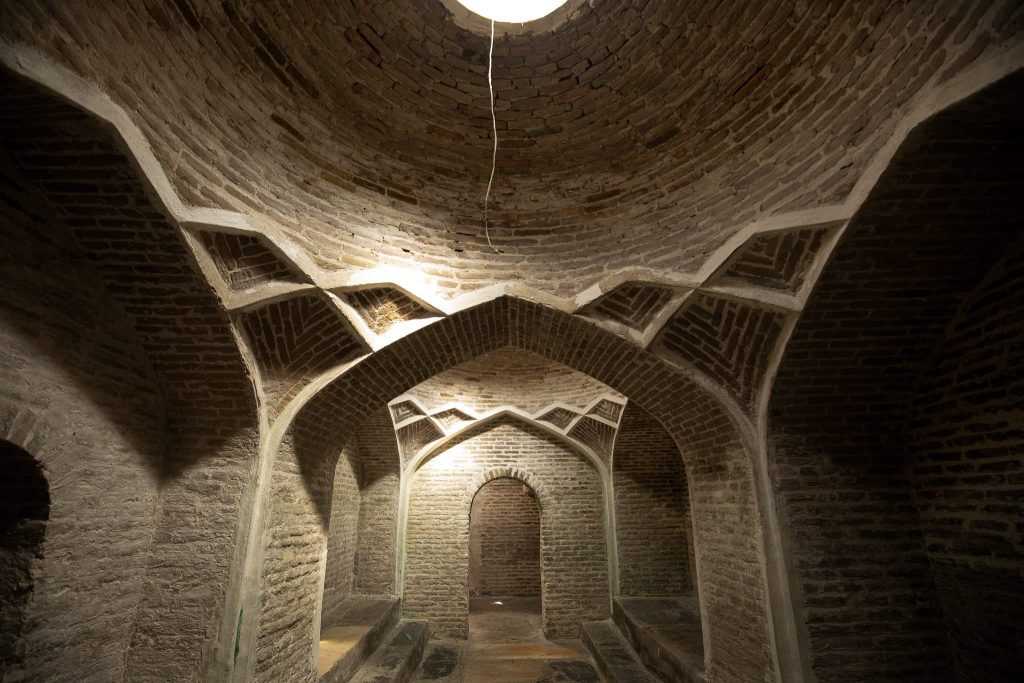
Getting Naked: My Experience in One of the World’s Oldest Hammams, Bukhara
The city centre of Bukhara (meaning ‘abbey’ in Sanskrit) is now a UNESCO World Heritage Site; however, it was historically one of the biggest trading cities along the Silk Road – a network of ancient trade routes across Asia from China to Europe.
How to visit a Hammam: Practical Tips
Bukhara, also referred to as Buxoro, Bukhoro, and Bokhara, is more than 2,000 years old.
What is Hammam?
A Hamam, also referred to by some as a Turkish Bath, is a place of public bathing associated with the Islamic world. Hammams, or Muslim bathhouses, are typically found across North Africa, the Middle East, Central Asia, Al-Andalus, the Indian subcontinent, and in Eastern and Central Europe under Ottoman rule.
Hammams found in Morocco, Uzbekistan, Turkey, Syria, Iraq, The Emirates, Tajikistan, Libya, Lebanon, and Tunisia are almost identical to each other.

The Hammam is a powerful phenomenon of Islamic heritage, and its significance goes way beyond wellness and hygienic protocols. The Hamman is of Arabic origin and means ‘heating and being warm’. While Hamman culture was inspired by the Roman Empire, it’s a tradition related to Turkish culture. Hammam culture creates a purifying and relaxing effect on the entire body – it not only refreshes your body; it also nourishes your soul.
Hammam Structure

How does Hammam work
Structured according to the principle of the palm, the hammam is a facility consisting of five rays radiating from one centre. The bathing procedure consists of five steps, namely warming the body, intense massage, peeling (using a hard glove to exfoliate dead skin cells), soaping, and pouring water. Similar to Roman baths, the hammam was the centre of social life. With a very low entrance fee, even poor people were able to afford the pleasure of attending a hammam.
‘Telak’ – Your Massage Therapist in a Hammam
The massage person in a hammam is known as a Telak. He’s also the doorman, usher, masseur, consultant, bartender, and bouncer – all at the same time. In the olden days, a Telak was highly respected, which meant he was exempt from paying any taxes.
About the Massage
There are a number of different movements involved in the massage – some of them appearing quite risky! To an onlooker it might appear that the body is being kneaded like dough. In earlier days, the masseur would use pomegranate peels rubbed into his hands to make them stiff and rough.

Sometimes the Telak will kneel on the client’s shoulders, hit him with his fist, bend him forcing his legs to reach the back of his neck, throw him from side to side, and jerk his head. Obviously the Telak is experienced and knows what he’s doing, but any of these moves performed by an unskilled person could cause bone fractures, joint dislocation, and even ligament ruptures.


Today, during the massage stage, there’s a lot of maneuvering of joints as the spine, legs, and arms are stretched. Of course, once warmed up, the body handles these practices extremely well. This style of massage involves working with the human body until it reaches the very edge of pain – without going over it. During the massage process, with alternating periods of stress and relaxation, the client will experience a wide range of sensations – from suppressing tears to pleasurable groans.
Hammam History in Bukhara
In the city of Bukhara in Uzbekistan, the baths have a lot of history – some even have mysteries. Some of these baths are over 400 years old and the question that remains unanswered is – ‘where does the water go?’ Even scientists have no idea how water drainage is handled. Apparently, one bathhouse was completely dismantled in an attempt to determine the intricacies of the water supply system, but the system stopped working when the bathhouse was reassembled. So, even today no-one really knows where the water goes.

Another interesting fact is that, in today’s terms, a bathhouse would be classed as a building with a Class A Energy Efficiency Rating, simply because it could be heated by one single candle at the entrance.
Today, these floors are heated by water boilers located on the floor below; gas heats the water; steam enters the soap rooms via holes in the walls; and every room receives a continuous flow of air due to the domed roofs. The reason for the domed shape ceiling is because of the high humidity. If the hammam had a flat ceiling the drops would fall onto the bathers’ heads, but the domed shape allows the moisture to drain down the walls. This is an amazing system that has been working effectively for more than 500 years.
It’s All About Cleanliness in Uzbekistan
To the people of Uzbekistan cleanliness is very important. In fact, bath complexes in Khiva were erected at the city’s entrance for the specific purpose of protecting the population from epidemics, and only people who had cleansed themselves in the hammam were allowed to enter the citadel. Bath attendants watched visitors very closely and if there was even the slightest suspicion of someone carrying an infectious disease, they were taken care of in the most drastic way – they were put to death, with no discussion taking place. At one of the gates in Khiva you can still see what’s referred to as the ‘Complex of Purity’ where past hammam, now pure of body and soul, ended up in the mosque.

Baths are traditionally known as Hammam Kunjak, and by the beginning of the 20th century there were a minimum of sixteen baths in Bukhara. Some are in mahalla, which is an urban division of communities in Uzbekistan; some are located near other public buildings, while others are located at busy intersections.
About Bukhara Hammam
- As an important aspect of the eastern cityscape, Hammam were typically built close to, but to the side of, a mosque; hidden from direct view. These were found in every quarter of the Islamic city and received visitors on a daily basis.
- The medieval Hammam Kunjak can be found near the giant Kalyan minaret in the very centre of Bukhara. Opened in the 16th century, the hammam was constructed in the Sheibanid era. It was originally built to service the Emir’s wives and concubines.
- Many baths in Central Asia were constructed with just one department, with men and women attending on separate days. Today, there is the Hammam Kunjah – a women’s bathhouse in Bukhara; and the Hammam Bozori Kord – a bathhouse for men.
Women and Hammam
Hammam is an integral part of the traditions and customs of Bukharin women. For instance –
- Women in labor are bathed and receive special massages, treatments, and exercises.
- Once a woman has given birth, she must attend the hammam on the 10th, 20th, 30th, and 40th days. The baby is also bathed on the 40th day with a special Bukhara clay. The belief is that, when a child is redeemed in this manner, they will become stronger than their peers.
- Women typically attend the bathhouses once a week, with many going in groups to exchange news.
- Visitor figures for both elderly and young women are roughly the same.
- Women trying to become pregnant are common visitors to the hammam. They come to lay on the ‘healing red stone’ and for tampons of camel fat, turmeric, honey, and almonds.
Interesting Facts About Hammam

- In Istanbul in the 7th Century AD, the Arabs copied the ancient Romans and built their first hammam.
- Prior to the arrival of hammams, people only washed in running water. It was not acceptable to bathe in a closed container, like a tub. Basically, it was considered the equivalent of bathing in one’s own dirt.
- There was a law in a number of Islamic countries which gave a wife the right to divorce her husband if he refused her entry into the hammam.
- A hammam today consists of modern multi-colored plastic buckets and 500-year-old brick walls.
- People are surprised at the wringing of hands, trampling, and other maneuvers shown by bathhouse attendants.
- The word hammam derives from ‘hammam’ an Arabic word which means source of hot water.
- The prophet Mohammed believed that the warm water of a hammam promoted a woman’s fertility.
The combination of five hundred year old brick walls and modern buckets made of multi-colored plastic is one of the most unusual and memorable.




